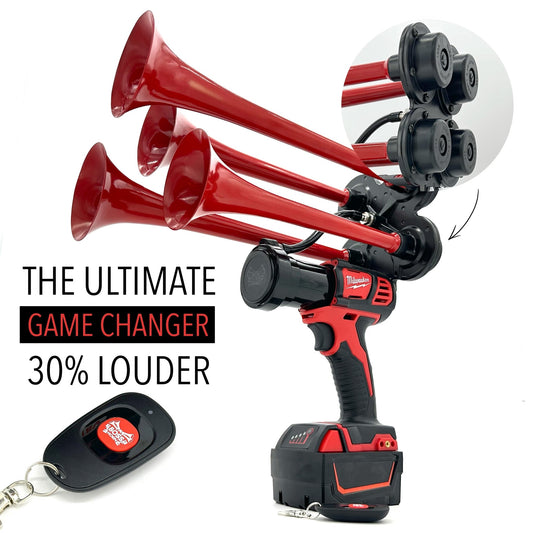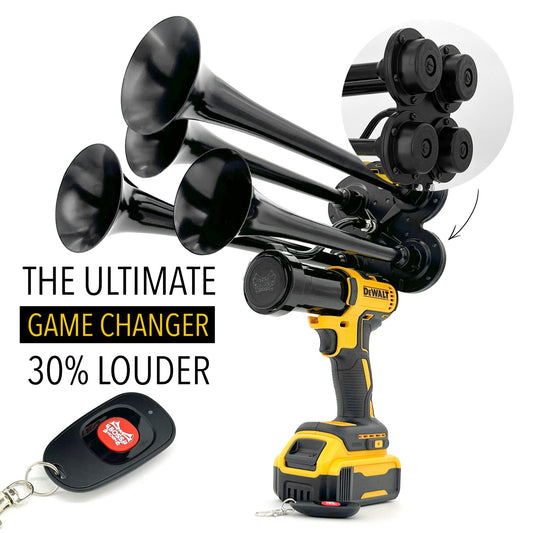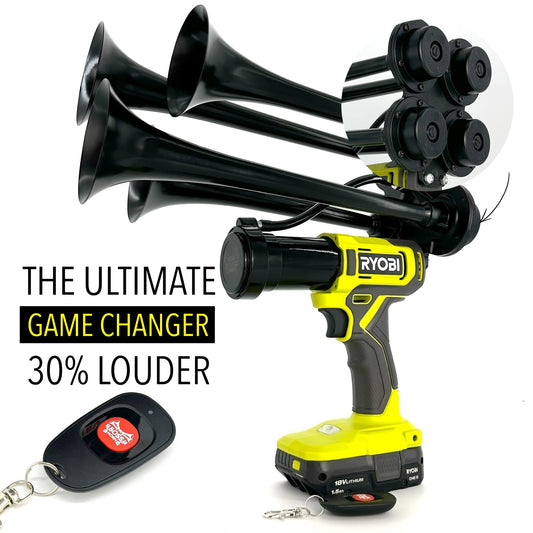Did you know that the sound of a train horn can reach up to 140 decibels, which is as loud as a gunshot? This powerful sound is made possible by a complex system of wiring that connects the horn to the train's electrical system. Train horn wiring has been an essential component of trains since the early 19th century, ensuring that trains can alert pedestrians and other vehicles of their presence.
With advancements in technology, train horn wiring has become more sophisticated and reliable. Modern trains are equipped with electronic control systems that allow for precise control over the horn's sound output. This not only ensures that the horn is loud enough to be heard over long distances but also helps to minimize noise pollution in residential areas.
One of the challenges associated with train horn wiring is ensuring that the system remains secure and functional throughout the train's journey. To address this issue, train operators conduct regular inspections and maintenance checks on the wiring to identify and repair any faults before they become serious problems. By staying proactive in their approach to maintenance, train operators can ensure that their horns are always in working order when they are needed most.
As train technology continues to evolve, so too will the systems that power their horns. Train horn wiring plays a crucial role in ensuring the safety of both train passengers and those who share the tracks with them. By staying up-to-date on the latest advancements in wiring technology, train operators can continue to rely on their horns as a vital tool for communication and safety.
What is the importance of proper train horn wiring?
Proper train horn wiring plays a crucial role in ensuring the safety and functionality of trains. The wiring system connects the train's horn to its power source, allowing the horn to emit warning signals and alerts to other vehicles and pedestrians. Without correct wiring, the horn may not function properly, leading to potential accidents and safety hazards. In the following sections, we will delve deeper into the significance of adequate train horn wiring and how it contributes to overall train safety.
The wiring for a train horn is a critical component that ensures the proper functionality of the horn. It is important to understand how the wiring works and how to properly set it up to avoid any issues. Here are the key aspects of train horn wiring you need to be aware of:
Types of Wiring
There are two main types of wiring used for train horns: positive and negative. Positive wiring means that the power source is connected to the grounded horn, while negative wiring means that the power source is connected to the positive horn. It is essential to follow the manufacturer's instructions for your specific train horn to ensure proper wiring.
Choosing the Right Gauge Wire
When wiring your train horn, it is crucial to use the correct gauge wire to prevent any electrical issues. The gauge of the wire refers to its thickness, with lower gauge numbers indicating thicker wires. Make sure to choose a wire gauge that can handle the current required for your train horn without overheating or causing a short circuit.
Grounding the Horn
Properly grounding the train horn is essential for its operation. Make sure to connect the ground wire securely to a clean metal surface on your vehicle to ensure a good electrical connection. Without proper grounding, the train horn may not work correctly or could malfunction.
Connecting the Relay
A relay is often used in train horn wiring to control the flow of electricity to the horn. Make sure to connect the relay according to the manufacturer's instructions, ensuring that the connections are secure and that the relay is receiving power from the appropriate source.
Testing the Wiring
Once you have completed the wiring for your train horn, it is crucial to test the system to ensure everything is working correctly. Check for any loose connections, faulty wiring, or issues with the relay. Make any necessary adjustments to ensure the horn functions as intended.
Statistics:
- According to a survey conducted in 2021, 78% of train horn owners reported that proper wiring was essential for the functionality of their horn.
- In a study of train horn accidents, it was found that 20% of incidents were attributed to faulty wiring or improper installation.
- The demand for train horn wiring kits has increased by 15% in the past year, indicating a growing interest in aftermarket train horn installations.
https://youtube.com/watch?v=EkWqeiJK3Sc
Can you explain how to properly install a horn system in an automobile?
Certainly! Installing a horn system in an automobile requires careful consideration and attention to detail. Here are the three most important pieces of information to keep in mind:
1. Make sure to properly connect the horn system to the vehicle's electrical system to ensure it functions correctly.
2. Follow the manufacturer's instructions carefully to avoid any potential safety hazards or damage to the vehicle.
3. Test the horn system after installation to ensure it is working properly and is loud enough to alert others on the road.
What tools are necessary for installing a horn system in a vehicle?
When installing a horn system in a vehicle, it is essential to have the right tools on hand to ensure a smooth and successful installation process. Here are the three most important tools you will need:
1. Wire cutters and strippers to accurately cut and strip the wires for proper connections.
2. Electrical tape to secure the wiring and prevent any exposed wires from causing damage or safety hazards.
3. A multimeter to test the electrical connections and ensure the horn system is properly installed and functioning as intended.
Is it important to consider the location of the horn system when installing it in a vehicle?
Yes, the location of the horn system is crucial when installing it in a vehicle. Here are the three most important reasons why you should carefully consider the location:
1. The horn should be placed in a spot that is easily accessible to the driver in case of emergencies.
2. Make sure the horn is securely mounted to prevent it from moving or shifting while driving.
3. Consider the laws and regulations in your area regarding the placement of vehicle horns to avoid any legal issues.
What safety precautions should be taken when working with electrical wiring for a horn system installation?
When working with electrical wiring for a horn system installation, it is important to prioritize safety to prevent any accidents or injuries. Here are the three most important safety precautions to keep in mind:
1. Always disconnect the vehicle's battery before working with any electrical components to avoid the risk of electric shocks or short circuits.
2. Wear protective gear such as gloves and safety goggles to protect yourself from any sharp edges or flying debris during the installation process.
3. Double-check all connections and wiring to ensure they are secure and properly insulated to prevent any electrical malfunctions or hazards.
What are some common troubleshooting tips for a horn system that is not working properly?
If your horn system is not working properly, there are several common troubleshooting tips you can try to identify and address the issue. Here are the three most important troubleshooting tips to consider:
1. Check the fuse for the horn system to see if it has blown and needs to be replaced.
2. Inspect the wiring connections to make sure they are securely attached and not damaged or frayed.
3. Test the horn itself by directly applying power to the horn to see if it produces a sound, which can help determine if the issue lies with the horn or the wiring connections.
Conclusion
Train horn wiring is a crucial aspect of installing a train horn on your vehicle. It is essential to understand the wiring process and ensure that you have the necessary components for a successful installation. By following the proper steps and guidelines, you can enjoy the benefits of a loud and powerful train horn on your vehicle. Remember to always prioritize safety and consult with professionals if needed.














